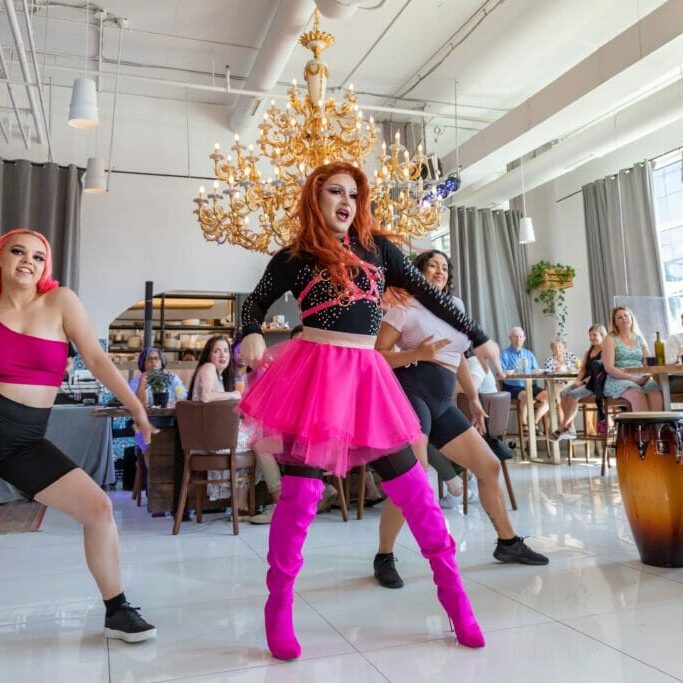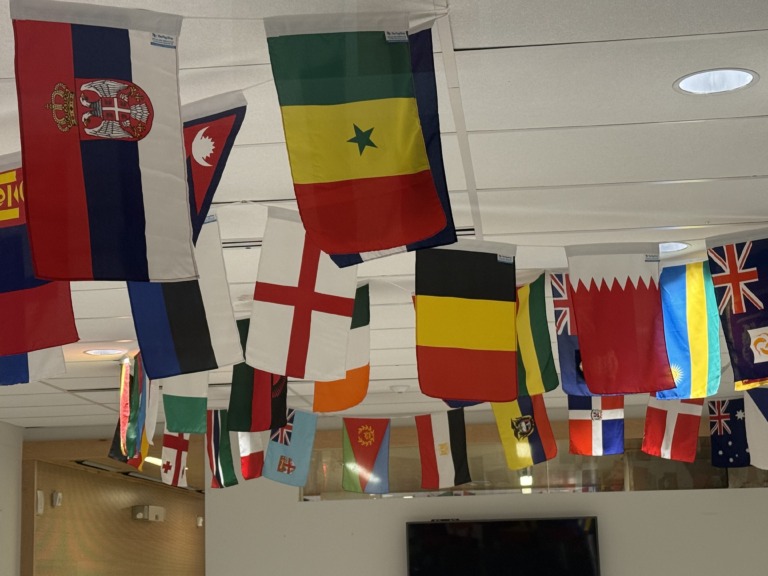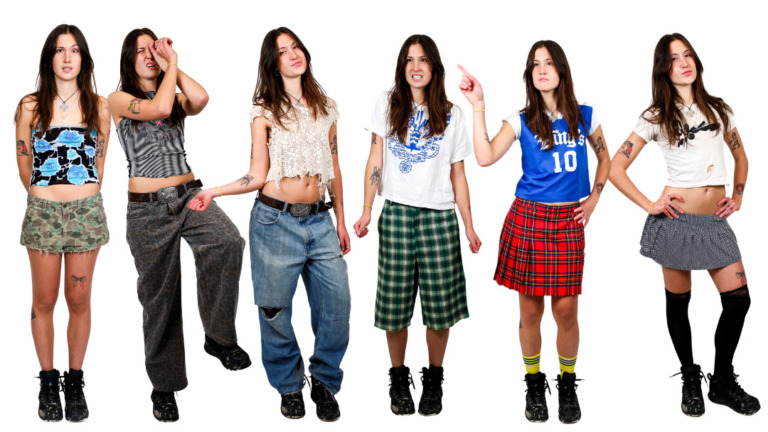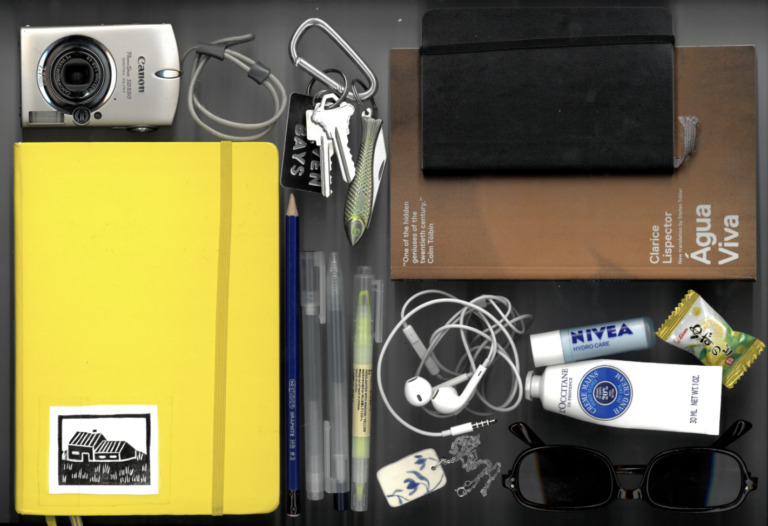
Keeping up with Zara Matrix
The Halifax-based drag performer talks about her career and what’s to come
It takes Zara Matrix up to four hours to get into full drag. It’s a labour of love but it pays off. Because when Matrix steps on stage, all eyes are on her.
Trading skates for stilettos
Matrix is a drag queen based in Halifax, who’s been performing professionally for about four years. She began her career while a student at Dalhousie University, where she graduated in 2020 with a bachelor’s degree in community design.
Before her time in drag, Matrix –– originally from Dartmouth –– was a competitive figure skater, training in Ontario and Quebec for most of her adolescence.
“I’ve always been a creative soul,” explains Matrix. “Once I retired from competitive skating, I moved back home to Halifax, and some friends of mine were into makeup and RuPaul’s Drag Race. We just started watching, and if anybody was to tell me five to six years ago that I was going to be a drag queen, I would not have believed them because it was just not on my radar.”
A complete drag look includes elaborate and exaggerated makeup, a corset, hip pads, an equally elaborate costume and a wig –– all held together by duct tape, glue and bobby pins. Matrix says she creates 85 to 90 per cent of her own costumes, which is “challenging, but fun.”
“I would say skating almost prepared me for drag, because of all the rhinestoning, all the performing, all that stuff. There are some similarities.”

An emerging career
The very first time Matrix performed in drag was for a youth pride event put on by the Halifax Central Library. She was also attending Dal at the time, and describes attending school while breaking into the drag scene as stressful.
“But drag ended up helping me out and relieving some of that stress,” she says, “which was nice. Unexpected, but nice.”
As Matrix’s career progressed and her performing opportunities increased, so did her ambition. For one Halifax pride event, Atlantic Drag Star 2018, she reached out to The Woods, a Halifax hip hop company, to hire backup dancers. It’s through The Woods that Matrix met Sara Steele.
Steele, who is assistant artistic director at The Woods and owner of Onset Hip Hop Company in Dartmouth, says that while she’s worked with drag queens in the past, she’s never worked with any in the capacity she has with Matrix.
It can take Matrix and The Woods dancers anywhere from three to six hours a week to prepare for one drag show, depending on the size of the show. When it comes to performance day, it’s all hands on deck.
“The day of the show, I’ll typically run the music and be kind of a ‘stage manager,”’ Steele says. “I do a lot of passing the microphone off, but also stuff like tying Zara’s corset up really tight for her, so she can go onstage looking great… all that fun stuff.”
For Matrix, a typical show consists of performing alongside five or six other drag artists. Each performer will do two sets, where they’ll typically lip-synch and dance to high-energy numbers.
A (very brief) history of drag
The term “drag” is thought to originate from British theatre slang, in which men described the “dragging” sensation that came with wearing women’s dresses and skirts.
William Dorsey Swann, a formerly enslaved person and gay liberation activist, is known for being the first person to identify themselves as a “queen of drag.” Swann would host drag balls attended by other members of the formerly enslaved Black community in Washington D.C. throughout the 1880s and 1890s. In 1920s New York, prohibition-made speakeasies served as the perfect spot for queer people to gather, and Harlem’s Hamilton Lodge hosted drag balls. It is during this period that drag began to take on its recognizable form, with vaudeville performances led by “female impersonators.”
Within Nova Scotia, the Gay Alliance for Equality (GAE) was founded in 1972. In 1976, the GAE opened the Turret, a gay bar and disco on Barrington Street in Halifax that would frequently host drag shows. Halifax had its first pride march in 1988, with 75 people marching through the North End.
While the performers and venues may have changed over the decades, the city has never been a stranger to drag or its culture.
Finding a place to perform
Prior to COVID-19 and the widespread lockdowns that closed venues for most of 2020, Matrix was doing about one drag show a month. She would usually perform at venues such as Reflections, Spatz Theatre, and the now-closed Menz and Mollyz –– which was one of Halifax’s few queer-owned bars and widely regarded as a safe space for the community. The bar closed for good during April 2020, and with it, Halifax lost a cherished queer performance space.
Lately, Matrix has been doing most of her performances at The Garden, a restaurant and bar located in downtown Halifax.
While COVID-19 restrictions closed many performance spaces and tightened capacity limits, Steele says the pair have looked at the unprecedented free time brought on by lockdowns with optimism.
“For my personal business as a dance studio owner [the pandemic] was terrible, but for Zara and my working relationship, the lockdowns were actually a huge blessing,” she explains. “It kind of gave us time to hyper-focus on the shows, and really if it wasn’t for COVID-19 I don’t know how many of these shows we would have done.”
What’s to come
When asked what she sees herself doing in the future, Matrix says one of her biggest goals is to combine her two passions.
“I want to do a drag show on ice, combining skating and drag. It was supposed to happen in 2020, but COVID-19 happened. That’s probably my biggest goal, I would love that.”
She says she’d also like to do Canada’s Drag Race, the Canadian version of US reality competition show RuPaul’s Drag Race, someday.
“I would love to be the East Coast queen there, because they haven’t had anybody yet. I want to use this year, coming out of the pandemic. I want to have everything planned… I’m hoping we’ll keep on going up.”
Matrix says a common misconception she sees is that people often assume drag performers are extremely feminine all the time, even when they’re not in drag. She also says that people tend to believe that there’s only one type of person who can do drag. Matrix works to challenge both of these beliefs, and says that at the heart of what she does, drag is all about self-expression.
“There’s a variety of identities and people who do drag. Drag is not just a drag queen,” she explains. “There are drag kings too, nonbinary performers, so, drag is really just a form of expression. It’s your art. It’s whatever your vision is, really.”
Editor’s Note: The author of this story was previously employed at The Garden, the bar and restaurant mentioned in this story.






